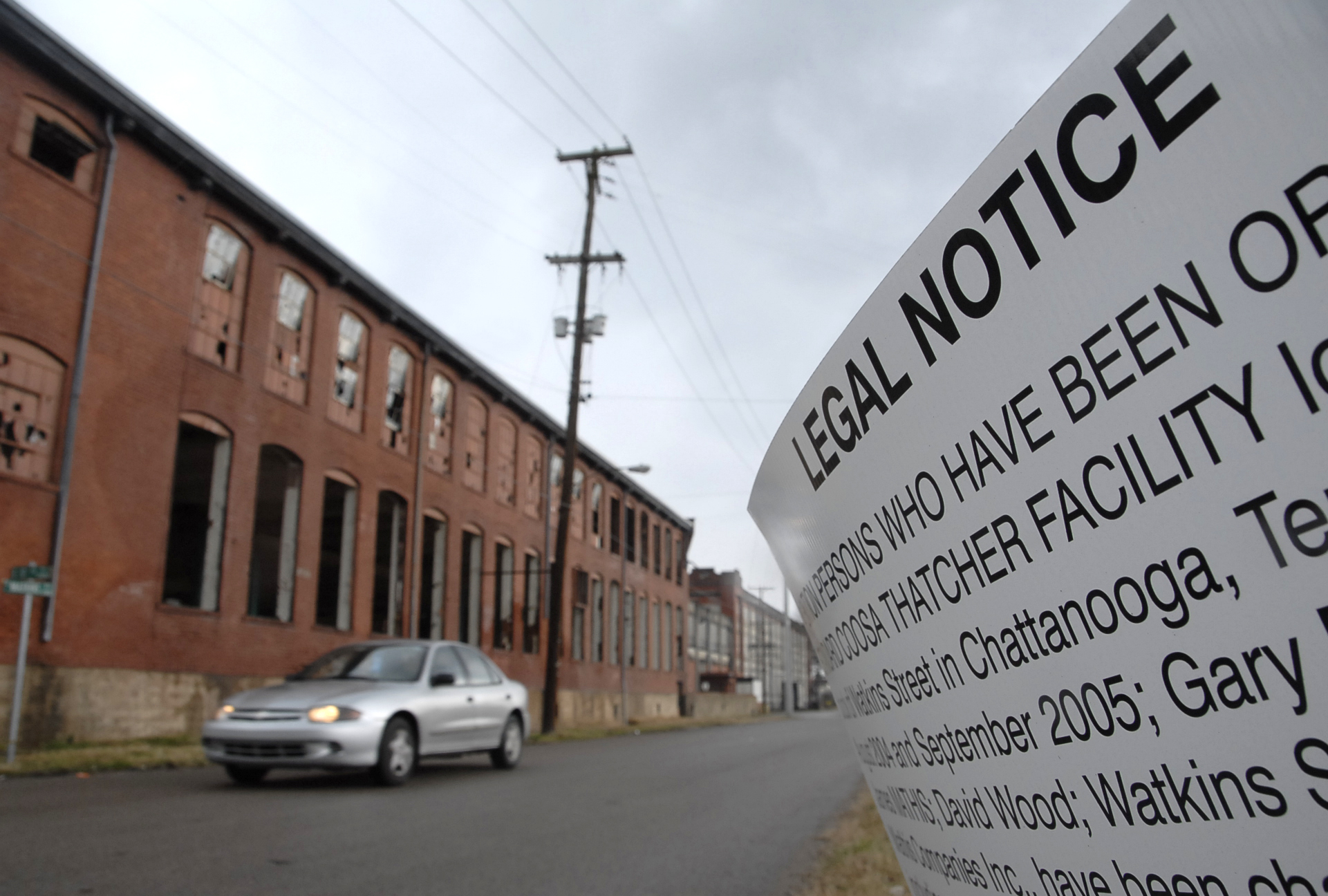EPA ex-worker testifies in Chattanooga asbestos abatement case
Friday, January 1, 1904
Former EPA investigator Jeff Crane told a federal jury Tuesday that he learned of the Standard Coosa Thatcher demolition that resulted in hazardous asbestos releases while visiting state environmental regulators in Chattanooga.
Crane, now a special agent for the U.S. Army criminal investigation division, said he visited the site and saw pieces of asbestos and pipe wraps scattered amid demolition debris over roughly a square block.
But unraveling how regulatory safeguards intended to protect workers and the public from hazardous asbestos took more than just a survey of the scene, according to testimony in the trial of three men and two companies facing federal charges of violating the asbestos removal laws and the Clean Air Act.
In following months, Crane interviewed property owners, site workers, removal experts and regulators, as well as participated in several grand jury sessions, he said Tuesday.
Federal prosecutor Matthew Morris last week summarized much of the resulting 23-page, 10-count indictment against property owner Donald Fillers, Fillers' employee David Wood, demolition contractor James Mathis, Mathis Cos. Inc. and Watkins Street Project Inc. to the jury.
The defendants are charged with conspiracy to defraud the United States, Clean Air Act violations, false statements, obstruction of justice and aiding and abetting.
Morris and co-prosecutor Todd Gleason contend each of the defendants failed to ensure asbestos was removed properly or failed to turn in complete surveys to obtain permits before demolishing the nearly 100-year-old textile plant on Watkins Street between August 2004 and December 2005.
On Tuesday, Crane offered a glimpse of how the case came together.
After learning that three companies had submitted estimates or bids on the removal of asbestos before the demolition, Crane said he asked Mathis to explain how one company ended up removing asbestos for $28,000 when another company's bid was $129,250 and a surveyor's estimate for the removal was $214,650.
"His response was, 'I can't tell him [the low bidder] to charge more,'" Crane said.
But Crane noted the low bid was to remove much less asbestos than the certified survey found and detailed in a 2003 report.
"That's a $100,000 worth of asbestos that's not accounted for," Crane said he told Mathis.
Crane also said defendant Don Fillers, told him that his brother, Gary Fillers, wasn't speaking to him because Gary was "not happy" with the way he was handling the project.
Gary Fillers pleaded guilty to conspiracy in the case and has been placed on supervised probation. He is listed as a witness for the prosecution in this trial.
Fillers' defense attorney, Leslie Cory, on cross-examination, prompted objections from prosecutors when she asked Crane: "Could it have been because [Don Fillers] had spent so much money" on the project?
When she rephrased her question to ask whether Crane knew why one brother was not happy with the other, Crane said he did not know why.
Testimony in what is expected to be a three-week trial is moving slowly, as the defendants all have separate attorneys. Each attorney has an opportunity to question every witness.
So far, the defense attorneys have contended in their opening statements and witness questions that their clients are victims of an abatement contractor's incomplete asbestos removal and regulators who did not do their jobs.
Testimony will continue today.

